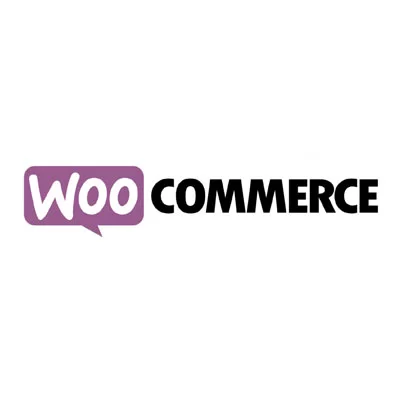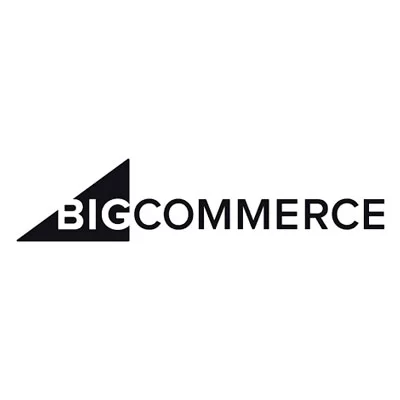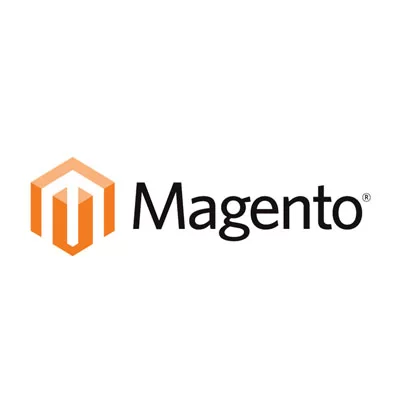Strengthen your Perth & Wheatbelt business’s online presence with tailored website design and hosting, raising visibility, enhancing user experience, and...


E-commerce website development services in Australia are becoming increasingly popular as more businesses recognise the potential of the online marketplace. Whether you’re looking to sell products or services, an e-commerce site can help you reach a wider audience and boost your bottom line.
However, developing a successful e-commerce site takes more than just throwing up a few pages and adding a shopping cart. To succeed in the highly competitive world of online retail, you’ll need to work with a team of experienced eCommerce developers who can help you create a customised solution that meets your specific needs. This guide will introduce you to some of the best e-commerce development companies in Australia, what to look for when choosing the right partner for your project and much more.
In the world of online shopping, first impressions are everything. That’s why it’s so important to have an e-commerce website that is user-friendly and visually appealing. And when it comes to designing an e-commerce website, there is no better place to start than in Australia.
Home to some of the world’s leading web design firms. Australian web designers are known for their creativity, innovation, and attention to detail. They are also experts at creating optimised websites for search engines, ensuring that your products and services are easy to find online.

WooCommerce is the most popular eCommerce platform in Australia. It powers over 30% of all online stores in the country and is used by some of the biggest brands, including Myer, The Iconic, and Kogan.com. WooCommerce is a WordPress plugin that turns a WordPress website into an online store. It’s very user-friendly and has a wide range of features, making it the perfect platform for businesses of all sizes.
There are many advantages to using WooCommerce over other eCommerce platforms. Firstly, it’s powered by WordPress, which is the most popular content management system in the world. This means that it’s very easy to use and there is a huge range of plugins and themes available for it.
Secondly, it’s extremely popular, which means that there are a lot of online resources available for it, and it’s very easy to find help if you need it. Finally, WooCommerce is very flexible and can be used for businesses of all sizes. Whether you’re just starting out or you’re a large multinational company, WooCommerce can be adapted to suit your needs.
If you’re looking for an eCommerce platform that is user-friendly, powerful, and adaptable, then WooCommerce is the perfect choice for you.

Shopify is the second most popular eCommerce platform in Australia, used by businesses of all sizes to sell online. It is a fully hosted platform, which means you don’t need to worry about hosting your own website or managing complex technical issues.
Shopify is easy to use, with a simple and intuitive interface that makes it perfect for businesses who are new to selling online. However, Shopify also offers a range of features to help you grow your business, including built-in marketing tools, abandoned cart recovery, and support for multiple languages and currencies.
Whether you’re just starting out or you’re an experienced online seller, Shopify is the leading eCommerce platform and enables businesses of all sizes to sell online. It is a fully hosted platform, which means you don’t need to worry about hosting your own website or managing complex technical issues. Shopify is easy to use and can be set up in just a few minutes, making it the perfect solution for business.
If you’re looking for an eCommerce platform that is user-friendly, popular and easy to use, then Shopify is the perfect choice for you.

BigCommerce offers a wide range of features and tools to help businesses grow their online sales. These include a powerful shopping cart, a customisable checkout process, and a range of marketing and shipping options.
BigCommerce also provides 24/7 support, making it easy for businesses to get started with selling online. In addition, the platform is constantly expanding its range of features and integrations, making it an excellent choice for businesses that want to scale their operations.
With its affordable plans and commitment to customer success, BigCommerce is the perfect partner for businesses of all sizes that are looking to grow their online sales.

Wix is a popular website builder offering various features to help businesses build and grow their online presence. Wix eCommerce is a powerful eCommerce platform that enables businesses to sell online with ease.
The platform has a user-friendly interface and a wide range of features, including product galleries, shopping carts, and discount coupons.
Wix also offers a range of marketing and shipping options to help businesses boost their sales. Whether you’re just starting out or you’re an experienced online seller, Wix eCommerce is the perfect platform for your business.

Magento is now owned by Adobe and has been rebranded as Adobe Commerce.
Build multi-channel commerce experiences for B2B and B2C customers on a single platform. From catalog to payment to fulfillment. Create a professional grade online store that is endlessly flexible, extensible, and scalable.
Magento is used by some of the world’s leading brands, including Coca-Cola, Ford, and Samsung.

Squarespace is an all-in-one eCommerce platform that makes it easy to start selling online. With Squarespace, you can create a beautiful online store in minutes without any experience or design skills required. Plus, Squarespace offers powerful features that let you take your business to the next level. For example, you can use
Squarespace to accept payments, manage inventory, and ship orders worldwide. And with Squarespace’s built-in SEO tools, you can ensure that your products always appear in search results.

Square Online is an eCommerce platform powered by Square, the popular point-of-sale system used by businesses of all sizes.
With Square Online, you can create a professional online store in minutes and start selling your products to customers around the world. Plus, Square Online offers a range of powerful features to help you grow your business, including built-in marketing tools, abandoned cart recovery, and support for multiple languages and currencies.
Whether you’re just starting out or you’re an experienced online seller, Square Online is the perfect platform for your business.

Weebly since been acquired by Square has become a serious player in the eCommerce platform space. What was once a clunky and basic platform has transformed itself into a more easy to manage system.
Weebly is designed with security features built-in and users can create a simple and easy shopping cart website in no time. The system can handle selling either physical or digital products.
If you’re an Australian business looking to transition to the online space, Weebly has you covered!

Setting up an eCommerce website in Australia is a relatively straightforward process. However, there are a few key steps that must be followed in order to ensure a successful launch.
The first step is to decide what products or services you want to sell online. Consider your passion or hobby if you’re unsure what to sell. For example, if you love fashion, you could start an online store selling clothes, shoes, and accessories.
Alternatively, if you’re an experienced baker, you could start an online bakery selling cakes, cookies, and other sweet treats. Once you’ve decided what to sell, research your products or services to ensure that there is a demand for them online.
You can do this by searching for your products or services on Google and other search engines. If there are already many businesses selling what you want to sell, then you know there is a demand for it. However, if there aren’t many businesses selling what you want to sell, then you may need to reconsider your product or service.
After you’ve decided what to sell, the next step is to create a business plan. This will help you determine how much money you need to start your business and how you will make a profit. Your business plan should include a marketing strategy, which will help you attract customers to your online store. It should also include information on your target market, your competition, and your financial goals. Once you have a business plan in place, you can begin setting up your online store.
The next step is to choose an eCommerce platform that will enable you to create an online store. Many eCommerce platforms are available, including Shopify, Wix, Magento, and Squarespace. Each platform has its own unique features and pricing plans. Choose a platform that offers the features you need to run your business effectively. For example, if you plan on accepting payments online, make sure the platform you choose has built-in payment processing.
There are a few things to consider when choosing an eCommerce platform. First, you need to decide if you want to use a hosted platform or an open source platform. Hosted platforms, such as Shopify and BigCommerce, provide turn-key solutions that include hosting, design templates, payment processing, and customer support. Open source platforms, such as Magento and WooCommerce, give you more control over the look and feel of your store but require more technical expertise to set up and maintain.
Next, you need to decide what features are important to you. Some features, such as product reviews and social sharing, can help increase conversion rates. Other features, such as abandoned cart recovery and product recommendations, can help improve customer satisfaction and loyalty.
Once you’ve decided on the platform and features that are right for your business, it’s time to start setting up your store. In most cases, this will involve adding products, configuring shipping and taxes, and choosing a payment processor.
Once you’ve chosen an eCommerce platform, you’ll need to choose a domain name and web hosting for your store. Your domain name is the address of your website (e.g., www.example.com).
Choose a domain name that is easy to remember and relevant to your business. Web hosting is the service that provides the technology and services needed to view your website on the Internet.
When choosing a web host, make sure to select a reputable provider with reliable uptime and customer support. Choosing a web hosting provider in Australia will ensure that your website will load from servers within Australia to get better performance for your customers and the support is likely to be local instead of dealing with an overseas customer support line.
Once you have your domain name and web hosting set up, you can begin setting up your eCommerce website. Most eCommerce platforms offer easy-to-use tools that make it simple to create an online store. Just follow the instructions provided by your chosen platform. If you need help, most platforms offer 24/7 customer support.
If you’re not sure how to create an eCommerce website, you may want to hire a web designer. A web designer can help you create a professional looking website that is easy to navigate and easy for customers to use. They can also help you choose the right shopping cart software and payment gateway for your business.
When setting up your eCommerce website, there are a few things you should keep in mind. First, make sure your website is secure. This means installing an SSL certificate and ensuring that all of your customer’s information is safe. Second, make sure your website is easy to use. Your customers should be able to find what they’re looking for quickly and easily. Lastly, make sure your website is optimised for search engines.
This will help you get more traffic to your site and make it easier for customers to find you. Hiring a web designer is a great investment for your eCommerce business.
If you’re not sure where to start, our eCommerce 12 steps to successfully launching an e-Commerce website can help you get better results for launching your online store for your business.
To ensure that your store is successful, you need to track key performance indicators (KPIs). KPIs help you to understand how your store is performing and identify areas for improvement. Some of the most important KPIs for eCommerce businesses include conversion rate, average order value, and customer lifetime value.
To ensure that your store is successful, you need to track key performance indicators (KPIs). KPIs help you to understand how your store is performing and identify areas for improvement. Some of the most important KPIs for eCommerce businesses include conversion rate, average order value, and customer lifetime value.
Conversion rate is the percentage of website visitors who take a desired action, such as making a purchase. If your conversion rate is low, it could be an indication that your website is not user-friendly or that you are not offering enough incentives to encourage visitors to make a purchase.
Average order value is the average amount that customers spend when they make a purchase on your website. A higher average order value indicates that customers are spending more money when they shop on your website. To increase your average order value, you can offer discounts for larger orders or upsell products and services.
Customer lifetime value is the total amount of money that a customer spends on your website over the course of their relationship with your business. A high customer lifetime value indicates that customers are loyal and continue to make purchases on your website over time. To increase customer lifetime value, you can offer loyalty programs or repeat purchase discounts.
Tracking your ecommerce website’s metrics will give you insights into how well your website is performing and where you can improve. By tracking KPIs such as website traffic, conversion rate, and average order value, you can identify areas of your website that need improvement. By tracking these KPIs, you can make changes to your website that will lead to more sales and a higher ROI.
If you’re not tracking your website’s metrics, you’re missing out on valuable insights that could help you grow your business. Start tracking your KPIs today to get the insights you need to improve your ecommerce website.
360 marketing strategy involves using a range of marketing channels to promote your products or services. The most common 360 marketing channels include email, social media, search engine optimisation (SEO), and pay-per-click (PPC) advertising. By using a combination of these channels, you can reach a larger audience and sell more products.
What is 360 marketing?
360 marketing is an all-encompassing approach to marketing that considers every possible touchpoint a potential customer has with your brand. In other words, 360 marketing covers all bases, making sure your target market is reached through multiple channels and at various points in their journey from awareness to purchase.
The benefits of 360 marketing are many and varied, but some of the most notable include:
If you’re looking to take your marketing to the next level, 360 marketing could be the answer. But how do you go about creating a 360 marketing strategy? Here are some tips:
If you want to take your eCommerce business to the next level, you should consider hiring an eCommerce marketing agency. An agency will have a team of experienced marketing professionals who can help you to grow your business. They will create and implement a tailored marketing strategy to help you achieve your business goals.
There are many benefits of hiring a eCommerce marketing agency. They will be able to provide you with the expertise and resources that you need to grow your business. An agency will also have a network of contacts that you can use to reach your target market. Additionally, an agency will be able to save you time and money by managing your marketing campaigns for you.
If you are ready to take your eCommerce business to the next level, then consider hiring a eCommerce marketing agency. With their help, you can achieve your growth goals and take your business to new heights.
There are many types of payment gateway available in the market. You should select the right one based on your business model, country, and currency. For example, if you’re selling physical products, you’ll need a payment gateway that supports shipping and tax calculations. Alternatively, you’ll need a payment gateway that supports instant downloads if you’re selling digital products.
To get the best payment gateway for your business, you should consider the following factors:
If you’re looking for a payment gateway for your Australian business, we recommend Paypal or Stripe. Both of these providers have competitive fees and are easy to use. They also provide good customer support in case you have any problems.
If you’re looking for a payment gateway for your business, we recommend that you compare the fees charged by different providers to find the best deal. You should also consider the ease of use and customer support when choosing a provider.
If you’re selling physical products, you’ll need to set up shipping and returns for your store. Shipping is the process of delivering products from your warehouse to your customer’s doorstep. Returns are when customers send back products they are not satisfied with. To make sure that your customers are happy with their purchases, you need to offer hassle-free shipping and returns experience.
Shipping Policy
Your shipping policy should cover the following:
Returns Policy
Your returns policy should cover the following:
If you offer free shipping on orders over $100, make sure this is clear on your shipping page. You can also highlight other benefits of shopping with you, such as free returns or same-day delivery. By offering a great shipping and returns experience, you can turn one-time shoppers into lifelong customers.
Last but not least, you need to provide excellent customer service. This includes responding to customer inquiries promptly, offering helpful advice, and resolving customer complaints quickly. By providing excellent customer service, you can create a loyal customer base that will keep coming back to your store.
There are a few things to keep in mind when providing excellent customer service on your ecommerce website:
By following these tips, you can create a loyal customer base that will keep coming back to your store.

If you’re planning on starting an eCommerce website, one of the first decisions you’ll need to make is choosing the right platform. There are a number of different options available, and it can be tough to know which one is right for you. Here are a few things to consider when making your decision:
The first thing you need to consider is your business model. Are you selling physical, digital, or a combination of both? You’ll need a platform that supports shipping and tax calculations if you’re selling physical products. Alternatively, if you’re selling digital products, you’ll need a platform that supports instant downloads.
Another important consideration is whether you’re selling to consumers or businesses. Business-to-consumer (B2C) ecommerce platforms are typically designed for consumer-facing websites. Business-to-business (B2B) ecommerce platforms are designed for websites that sell products and services to other businesses.
Once you’ve considered your business model, you can start looking at specific ecommerce platforms. Shopify, BigCommerce, and WooCommerce are all popular options for B2C businesses. For B2B businesses, Magento and SAP Hybris are two popular choices.
When choosing an ecommerce platform, it’s important to consider your specific business needs. If you’re selling digital products, for example, you’ll need a platform that can support downloadable product files. If you’re selling physical products, you’ll need a platform with robust shipping and inventory management features. And if you’re selling both digital and physical products, you’ll need a platform that can do both.
The bottom line is that there’s no one-size-fits-all answer when it comes to choosing an ecommerce platform. The best platform for your business will depend on your specific business model and needs. So take some time to consider what’s important to your business before making a final decision.
Another thing to consider is your budget. Some platforms are more expensive than others. If you’re on a tight budget, you may consider a platform offering a free trial or a pay-as-you-go plan.
Some ecommerce platforms require you to purchase plugins or third-party software to make your ecommerce website function. These can include payment gateway providers, shipping carriers, and marketing tools. Make sure to factor these costs into your budget when considering an ecommerce platform.
When budgeting for an ecommerce website, there are a few things you need to take into account:
As you can see, there are a lot of factors to consider when budgeting for an ecommerce website. By taking all of these into account, you can be sure that you have a clear understanding of the costs involved in setting up and running an online store
You’ll also need to consider the features you need for your store. The most important features for eCommerce businesses include product pages, shopping carts, payment gateway integration, and order management. You should also consider whether you need features such as abandoned cart recovery, customer reviews, or product recommendations.
Ecommerce websites must have product pages that include features such as product descriptions, pricing, and photos. Customers need to be able to add items to their shopping cart and see the total cost of their purchase. Payment gateway integration is also essential for eCommerce businesses, as it allows customers to pay for their purchases online. Order management is another key feature, as it allows businesses to track and fulfill orders.
Other features that may be important for your ecommerce website include abandoned cart recovery, customer reviews, and product recommendations. Abandoned cart recovery allows you to recover lost sales by sending customers reminders about the items they left in their shopping carts. Customer reviews allow customers to share their opinions about your products and services. Product recommendations allow you to suggest other products that customers might be interested in.
When choosing an ecommerce platform, it is important to consider the features that are most important to your business. Make sure to choose a platform that offers all of the features you need to run your business successfully.
You’ll need to have some technical skills to set up and maintain an eCommerce website. If you’re not technical, you may want to consider a platform that offers 24/7 customer support.
You should consider the ease of use when choosing a platform. The last thing you want is a platform that’s difficult to use. You should be able to set up your store and start selling quickly and easily.
There are many benefits to having an easy to use ecommerce site. First, it will save you time. You won’t have to spend hours trying to figure out how to use the platform or how to add products. Second, it will save you money. A platform that’s easy to use will be less expensive than one that’s difficult to use. Third, an easy to use platform will make it easier for you customers to buy from you. They won’t have to waste time trying to figure out how to use the site or how to find the products they want. Fourth, an easy to use platform will make it easier for you to promote your products and your store. You’ll be able to get your message out there more easily and reach more customers.
Finally, an easy to use platform will make it easier for you to run your business. You won’t have to spend so much time on customer support or on managing your website. Instead, you can focus on running your business and making money.
There are many ecommerce platforms available, but not all of them are created equal. When you’re choosing a platform for your store, make sure that you choose one that is easy to use. That way, you’ll be able to get up and running quickly and start making sales right away.
You should also consider the type of product you’re selling. You’ll need a platform that supports shipping and tax calculations if you’re selling physical products. Alternatively, if you’re selling digital products, you’ll need a platform that supports instant downloads.
The types of products that can be sold in an online store:
Products that aren’t good for selling online:
If you’re selling in multiple countries, you’ll need to make sure that your platform supports multiple currencies. You should also consider the language and cultural differences when selling in different countries.
When you’re selling products online, it’s important to consider the taxes and shipping costs associated with each country you’re selling to. Depending on the product, you may also need to consider delivery options and what happens if a product gets lost in transit.
If you’re just starting out, it’s usually best to stick to selling in your own country first. This will help you avoid any potential complications with customs and ensure that you’re familiar with the tax laws in each country. Once you’ve got a handle on things, then you can start expanding into other countries.
Here are some things to keep in mind when selling internationally:
You’ll need to choose a platform that integrates with the payment gateway available in the market. You should select the right one based on your business model, your selling countries, and your customers’ payment methods.
There are many things to consider when choosing a payment gateway for your ecommerce website. Customers expect convenience, security and trust when making online payments. While there are many different payment gateways available, some are more trusted than others. Speaking to your bank about setting up a payment gateway on your online store is a good idea, as they will be able to offer advice and assistance.
When choosing a payment gateway, it’s important to consider the following:
Your ecommerce website should offer a payment gateway that is convenient, secure and trustworthy. By doing so, you will give your customers the best possible experience when making online payments.
You should consider the scalability of the platform when making your decision. If you’re planning on growing your business, you’ll need a platform that can scale with you.
As your eCommerce business grows, you’ll need to make sure that your website can handle the increased traffic and transactions. This is where eCommerce scalability comes in.
Scalability is the ability of a system to handle the increased load without degrading performance. When it comes to eCommerce websites, this means being able to handle more traffic and transactions without slowing down or crashing.
There are a few key things to consider when making sure your eCommerce website is scalable:
Making sure your eCommerce website is scalable is important for two reasons:
If you’re not sure if your eCommerce website is scalable, it’s always a good idea to talk to a web design agency that creates eCommerce websites for the best advice.
Last but not least, you’ll need to make sure that the platform can integrate with a shipping company such as Australia Post or DHL. This will ensure that your customers can receive their orders quickly and efficiently.
Australia Post is one of the most popular shipping providers in Australia, and for good reason. They offer a wide range of services and are constantly expanding their reach to ensure that they can provide the best possible service to their customers. One of the most useful tools that they offer is the Australia Post Calculator. This tool can be used to help you determine the cost of shipping your products within Australia.
The AusPost Website Integration tool allows you to easily integrate Australia Post shipping into your ecommerce website. This plugin provides you with access to the AusPost Calculator so that you can quickly and easily calculate the cost of shipping your products. The plugin also includes a number of other features such as support for multiple languages and currencies, making it easy to use for international customers.
Setting up Australia Post integration on your ecommerce website is quick and easy with the AusPost Website Integration plugin. This plugin provides you with access to the AusPost shipping calculator and connects to your Australia Post Account and allows you to easily integrate Australia Post shipping into your website.

A payment gateway is a service that allows you to accept credit card and debit card payments online. It acts as an intermediary between your eCommerce website and the banks that process the payments. There are a number of different payment gateway providers available in Australia, such as:
Each payment gateway provider has its own set of features, benefits, and fees. To find the right one for your business, you’ll need to consider your business model, the countries you’re selling in, and your customers’ payment methods.

Mobile commerce (m-commerce) is the buying and selling of goods and services through mobile devices such as smartphones and tablets. It’s a rapidly growing industry, with researchers predicting that m-commerce sales will reach $6 trillion by 2024. There are a number of things to consider when developing an m-commerce website, such as:
You’ll need to ensure that your website is optimised for mobile devices. This means creating a responsive design that’s easy to navigate on a small screen. You should also consider the loading speed of your website and whether you need to offer offline access.
Mobile commerce is the ability to conduct transactions or access content on a mobile device, such as a smartphone or tablet. Mobile commerce can take many forms, including:
Creating a mobile friendly online store is important because most people do their research first before making a purchasing decision and as many people carry their mobile device on them, they tend to look online and compare prices or gather information before purchasing.
Mobile commerce is growing rapidly as more and more people are using their mobile devices to shop online. However, there are still many security concerns that need to be addressed in order to ensure that Mobile Commerce is safe and secure. One of the most important security measures is to have an SSL Certificate installed on your Mobile Commerce site.
An SSL Certificate is a digital certificate that uses encryption to provide security for online communications. When you install an SSL Certificate on your Mobile Commerce site, it will create a secure connection between your website and the visitor’s browser. This means that all data that is exchanged between your website and the visitor’s browser will be encrypted and hence, it will be much more difficult for anyone to intercept and read this data.
Installing an SSL Certificate on your Mobile Commerce site is, therefore, a very important security measure that you should take to ensure the safety and security of your online transactions.
Mobile devices are becoming more and more popular as a means of accessing the internet and conducting online transactions. It is therefore, important to ensure that your Mobile Commerce site is secure and has an SSL Certificate installed. This will help to protect your customers’ personal and financial information from being intercepted and stolen by hackers.
If you do not have an SSL Certificate installed on your Mobile Commerce site, then you should consider doing so as soon as possible to protect your customers’ data. Mobile devices are becoming increasingly popular and it is only a matter of time before they become the dominant platform for online transactions. Don’t let your Mobile Commerce site be the weak link in your security chain. Protect your customers and your business by installing an SSL Certificate today.
If you’re running a mobile eCommerce business, then it’s critical that you track your analytics data carefully. By doing so, you can gain valuable insights into your customers’ behavior and optimize your marketing and sales strategies accordingly.
There are a number of different mobile eCommerce analytics tools out there, but Google Analytics is one of the most popular and comprehensive. Setting up tracking for mobile devices is fairly easy, and there’s a wealth of data that you can collect.
When it comes to mobile eCommerce analytics, some of the most important metrics to track include conversion rates, average order value, mobile traffic sources, and mobile bounce rates. By understanding these key indicators, you can make sure that your mobile eCommerce business is on the right track.
If you’re not already tracking mobile eCommerce analytics, now is the time to start. Google Analytics makes it easy to get started, and the data you collect can be invaluable in helping you optimize your business for success.

Inventory management is the process of tracking and managing the stock of goods in a warehouse. It’s a critical part of any eCommerce business, as it helps to ensure that orders are fulfilled on time and that customers are satisfied. There are a number of things to consider when setting up an inventory management system, such as:
It’s important to fulfill orders on time, every time. Customers expect nothing less than perfection when they make a purchase, and it’s your job to deliver.
To do this, you need to track stock levels for each product and have a system in place to deal with product alerts. This is where an inventory management system comes in handy.
When it’s time to fulfill an online order, you need to be organized and efficient. First, check that the items are in stock and then pick them from the shelves. Next, pack the items carefully so that they arrive in perfect condition. Finally, ship the order out as soon as possible.
After an order is fulfilled, it’s important to follow up with the customer to make sure they’re happy with the purchase. This is how you build long-term relationships with customers and turn one-time buyers into lifelong fans.
The eCommerce landscape is constantly evolving, and with that comes new challenges for online retailers. One of the most important challenges is ensuring customer satisfaction. There are a number of ways to ensure customer satisfaction on your eCommerce website. First, you need to setup a system to track how the customer responds. This will help you identify any areas where the customer is not satisfied.
Second, you should offer customer warranties on all of your products. This will give customers extra protection or guarantee with their purchase from your website. Finally, you need to measure customer satisfaction on your website. This will help you prevent purchase regret and ensure that your customers are happy with their purchase.
eCommerce customer satisfaction is important for any business that wants to maintain a good relationship with its customers. There are a few different ways to measure eCommerce customer satisfaction. One way to measure eCommerce customer satisfaction is through customer surveys. Customer surveys can be done through email, phone, or in person. They can also be done online through a variety of survey software programs. Customer surveys are a great way to get feedback from customers about their experience with your eCommerce store.
Another way to measure eCommerce customer satisfaction is through website analytics. Website analytics can give you valuable insights into how customers interact with your eCommerce store. You can use website analytics to track things like page views, bounce rate, time on site, and more.
You can also use customer service data to measure eCommerce customer satisfaction. Customer service data can include things like call volume, average handle time, first call resolution rate, and more. This data can be used to help you identify areas where your eCommerce store needs improvement. No matter what method you use to measure eCommerce customer satisfaction, it’s important to track this data over time. This will help you see trends and make changes to improve the satisfaction of your customers.
While it may seem like a lot of work, ensuring customer satisfaction is essential for any eCommerce website. By following these steps, you can be sure that your customers will be happy with their purchase. And happy customers means more sales for your business.
Operating an eCommerce website can provide your business with a number of cost saving benefits. Here are 10 benefits for having an online store:
1. No need for physical storefront – An eCommerce website eliminates the need for a physical storefront, which can save on rental costs, utilities, and other associated expenses.
2. Reduced labor costs – eCommerce websites are typically much easier to maintain than traditional brick-and-mortar stores, which can lead to reduced labor costs.
3. Increased customer reach – With an eCommerce website, your business will have the potential to reach a global customer base, as opposed to being limited to local or regional customers.
4. 24/7 operation – eCommerce websites never close, which means your customers can shop on their own schedule. This can lead to increased sales and revenues.
5. Automation of tasks – eCommerce websites can automate many tasks, such as customer order processing and inventory management. This can lead to significant efficiency gains for your business.
6. Increased data insights – eCommerce websites generate a wealth of data that can be used to improve your marketing and operational efforts. Having access to this data can give you a competitive edge in your industry.
7. Lower marketing costs – eCommerce websites are typically much less expensive to market than traditional brick-and-mortar stores. Additionally, online marketing is often more effective than offline marketing, so you can get more bang for your buck.
8. Improved customer retention – eCommerce websites make it easy for customers to purchase your products or services and to keep track of their orders. This can lead to higher customer satisfaction and loyalty, which can translate into repeat business.
9. Increased sales – eCommerce websites provide a 24/7/365 selling platform that can help you boost your sales. Additionally, studies have shown that eCommerce businesses typically enjoy higher conversion rates than offline businesses.
10. Global reach – eCommerce websites give you the ability to sell to customers all over the world. This can open up new markets and help you tap into new revenue streams.

Website speed and performance is important for any website, but it’s especially important for eCommerce websites. This is because customers expect a fast and seamless experience when shopping online. A slow website can lead to lost sales and unhappy customers. There are a number of things you can do to improve the speed and performance of your eCommerce website, such as:
A CDN is a network of servers that deliver user content based on location. Using a CDN can help improve your website’s speed and performance, as it reduces the distance that data travels. An eCommerce CDN can provide many benefits for an ecommerce website, including:
A content delivery network (CDN) can provide many benefits for an ecommerce website, including improved performance, increased security, reduced costs, and improved SEO. If you’re looking to improve the performance of your ecommerce site, a CDN may be the right solution for you.
Images are one of the biggest factors that can slow down a website. You should ensure that all your images are optimised for the web, which means reducing their file size without compromising quality.
There are a number of benefits to optimising your images on an eCommerce website. Not only can it help to improve the visual appeal of your site, but it can also speed up loading times and help you to rank higher in search engines.
One of the key benefits of optimising your images is that it can help to improve the overall user experience on your website. Images that are optimised for the web are typically smaller in file size, which means they load faster. This can be particularly important for users who are visiting your site on a mobile device or have a slow internet connection.
Faster loading times not only improve the user experience, but they can also have a positive impact on your search engine rankings. Google has stated that site speed is a ranking factor, so if your site is slow, you could be losing out on potential traffic.
Another benefit of optimising your images is that it can help you to save storage space and bandwidth. This is because smaller image files take up less space on your server and use less bandwidth when they’re being downloaded by users.
If you’re not sure how to optimise your images for the web, there are a number of online tools and services that can help compress your image sizes. By optimising your images, you can improve the overall performance of your website and provide a better experience for your users.
Caching is a technique that stores data in temporary memory, so it can be accessed more quickly. Using caching can help improve the speed and performance of your website, as it reduces the need to fetch data from the server each time a user visits your website.
Caching your website can be extremely beneficial for ecommerce websites. By caching website data, pages load faster and users experience fewer delays. This can improve website conversions and lead to higher sales. There are many other benefits of website caching, including:
If you’re not already using website caching, it’s time to start! Implementing a website cache can improve your website’s performance and bottom line.
HTTP requests are made each time a user visits a website. You should minimise HTTP requests by reducing the number of elements on each page. Here are 5 reasons why you should make improvements to your website to reduce your http requests:
1. Fewer http requests mean faster loading times for your website. This is especially important for eCommerce websites, where customers expect a fast and seamless experience.
2. Minimising http requests can also help reduce your website’s carbon footprint.
3. By minimising your http requests can save you money on bandwidth costs.
4. Minimising http requests can improve your website’s search engine optimization (SEO).
5. Minimising http requests can make your website more user-friendly and responsive.
If you’re running an ecommerce website, then you know how important it is to have a fast and reliable web host. A fast web host can make a big difference in terms of your website’s speed, uptime, and overall reliability. Here are just a few of the benefits of using a fast web host for your ecommerce website:
1. improved website speed
2. increased uptime
3. improved customer satisfaction
4. increased sales and conversions
5. lower operating costs
6. improved search engine rankings
7. greater security and stability
As you can see, there are many benefits to using a fast web host for your eCommerce website. If you’re looking for a reliable and affordable web hosting based in Australia, check out Constructive Visual’s website eCommerce Hosting Packages.

Hiring an eCommerce web development agency in Australia is a big decision. After all, they will be responsible for helping you build and launch your online store. With so much at stake, it’s important to avoid making any mistakes that could jeopardise the success of your business. Here are five mistakes to avoid when hiring an eCommerce web development agency in Australia:
It’s important to take the time to research different agencies before making a decision. Otherwise, you could end up working with an agency that isn’t a good fit for your needs.
If you’re thinking about creating an eCommerce website, it’s important to take your time and do your research first. There are a lot of things to consider when setting up an online store, and rushing into it without being prepared can lead to costly mistakes.
Before you start creating your eCommerce website, make sure you have answers to the following questions:
These are just a few of the things you need to think about before creating an eCommerce website.
If you’re thinking about creating an online store, it’s important to clearly define your goals from the outset. What do you hope to achieve by having an eCommerce website? Are you looking to generate more sales, reach a wider audience, or improve customer satisfaction?
An experienced web design agency will be able to help you identify your specific needs and create a bespoke website that meets them. Without clearly defined goals, it will be difficult to assess whether your website is successful or not. So take the time to think about what you want to achieve before you start the process of creating your eCommerce site.
Creating an eCommerce website can be a costly endeavour – from the initial investment in web design and development to ongoing costs for hosting, maintenance and plugins or add-ons. It’s important to factor in all of these cost when setting your budget for an eCommerce website.
When working with a web design agency, be clear about the type of website you need and what your budget is. This will help them to create a proposal that meets your needs and budget.
Ongoing costs such as website hosting, maintenance and subscription fees for services or plugins can add up over time. Be mindful of these costs when budgeting for your eCommerce website.
By considering all of the costs involved in creating an eCommerce website, you can be sure to set a realistic budget and avoid any unexpected expenses.
When creating an eCommerce website, it’s important to review any contracts or agreements carefully before signing them. This will help you avoid any unexpected costs or hidden fees. Be sure to have meetings with your web design agency to outline any ongoing costs associated with the website. Failing to do this could result in costly surprises down the road.
If you’re ever unsure, be sure to get a third party such as a business partner, trusted family friend or contract lawyer look over your web contract for you before signing.
If there is something that sounds confusing or you don’t know what it entails, be sure to reach out to your web designer to get them to explain the line on the web design contract for you. The web contract is designed to protect both parties to ensure that the web design project get completed on time.
If you’re working with a web design agency to create an eCommerce website, it’s important to have open and honest communication. This will help ensure that both you and the agency are on the same page and that your project is going as planned.
Set up regular meetings with the agency, and establish timelines for each stage of the project. This way, you can keep track of progress and make sure that everything is on track. If there are any issues, they can be addressed quickly and efficiently.
Good communication is essential for any successful project, so make sure you stay in touch with your web design agency throughout the process. If you need some time to get information, images or content to your web design agency, make sure that you reach out to them to let them know that it will take some time before you can provide that information to them.
If you’re planning on going away on holiday or taking some time off, make sure to let your web design agency know in advance. This way, they can plan around your absence and make sure that the project is still on track.
In short, communication is key when working with a web design agency. By maintaining open lines of communication, you can ensure that your project will run smoothly and that you’ll be happy with the final result.
For Constructive Visual, we work on an estimate of 2-6 Weeks to complete the development of an e-Commerce website.
This includes your store’s design, development, testing, and launch. We also offer a range of additional services such as search engine optimisation (SEO), social media marketing, and email marketing.
There are many web design agencies in Australia that offer eCommerce web design services and there are many companies that will promote that they are the number one company in Australia.
You can do a simple Google Search to find businesses within Australia who offer this service but do your due diligence first.
Be sure to check previous examples of work that the company has completed and envision what your website would look like with similar functionality and design.
Be sure to reach out for further information and gather a quote to compare with other companies.
You can reach out to these companies to ask question and to gauge if they’re a company you feel comfortable with working with to create your eCommerce website.
There are many great eCommerce web development services companies in Australia. However, your best company will depend on your specific needs and budget. Some of the top eCommerce web development services companies in Australia include:
Yes, all of the eCommerce websites we develop at Constructive Visual are responsive and mobile-friendly. This means that your website will automatically adjust to fit any screen size, whether it’s a desktop, laptop, tablet, or smartphone.
Mobile-friendliness is essential for providing an optimal user experience and ensuring that your website ranks well on search engine results pages (SERPs).
eCommerce platforms such as Shopify, Squarespace, Weebly, Square, Squarespace and WIX include their own in-house web hosting for their clients.
Each eCommerce platform will have different plans with web hosting storage sizes and bandwidth depending on how much is required for your site.
WooCommerce and BigCommerce are free open-source platforms that require you to purchase your own web hosting from a provider to setup your website.
Yes, WordPress is an open-source Content Management System (CMS) that can be setup as an online store by installing a free plugin called WooCommerce.
WooCommerce gives WordPress the ability to act as an online store. There are many free and paid WordPress themes that are designed specifically for WooCommerce.
You can create a simple business online store easily using WordPress and WooCommerce to sell products and digital goods.

Many great eCommerce web development services companies in Australia can help you create a successful online store. Be sure to do your research and clearly define your goals before hiring an agency. And don’t forget to communicate openly with your chosen agency to ensure your project is on track. With the right eCommerce web development services company, you can launch a successful online store in no time.
Loved this article? Please consider sharing it with your friends…

Peter Lowen
Senior Web Developer | CEO
Peter Lowen is the founder and CEO of Constructive Visual, a website design and hosting company. He has been creating websites since 2005 and writes content on business, marketing, web design, sales training, web hosting and WordPress related topics.
Strengthen your Perth & Wheatbelt business’s online presence with tailored website design and hosting, raising visibility, enhancing user experience, and...
Creating a Strong Online Foundation – Small Business Web Design in Perth
In today’s digital age, having a well-designed website is crucial for small businesses in Perth. A professionally designed website can...
Are you looking for the best web design services in WA? Look no further! In this comprehensive guide, we will...
The Essential Guide to Effective Business Logo Design in Perth
The importance of business logo design cannot be overstated, especially in a vibrant city like Perth. A well-designed logo serves...

We are an SEO & web design agency located in Northam, Western Australia.
Address: PO Box 985,
Northam WA 6401
Location: Perth, Western Australia
Phone: (08) 6118 9186
Email: Contact Us
Services
Information




